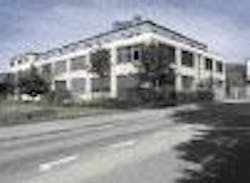Bien-Air ... a world leader in electric motors
In 1958, David Mosimann, an inventive and entrepreneurial precision mechanic with a passionate dedication to his profession and meticulous workmanship, decided to strike out on his own and created Bien-Air. The company’s continuous expansion, reflected in 2001 with the inauguration of a new factory specializing in surgical products, has enabled Bien-Air to adapt to the specific needs of these demanding fields.
The head office of the company is in Bienne, Switzerland, while the firm’s two production and assembly plants are in the Jura region. Well established in the “Watch Valley” with its cultural heritage of research, high precision, and practical ingenuity, Bien-Air creates and produces all of its products, from A-Z, locally!
Today, Bien-Air has more than 400 employees in Switzerland and worldwide. Distribution is performed through its subsidiaries and competent retailers. At the same time, a service organization consisting of more than 120 technicians offers fast and efficient service. The companies of Bien-Air Holding remain under the control of the founding family, thus ensuring the group’s independence, stability, and continuity.
Over the years, Bien-Air has evolved from a manufacturer of Swiss-made instruments to an optimized line designer. The key idea is to reduce the number of instruments and devices to the minimum for a maximum of operations! This strategy has prevailed in improving the efficiency of instruments, in expanding the capabilities of electronic controls, and in developing other systems.
To ensure impeccable production quality, Bien-Air’s highly skilled personnel perform stringent inspections during manufacturing and the machines meet the highest technological standards. Inspections are performed at each important stage on the increasingly automated assembly line. Each motor is subjected to a major running-in operation, during which it undergoes constant electrical inspections. Finally, each function of each motor is tested.
Thanks to the special relationship between Bien-Air and its valuable customers, these important evolutions have been made possible for the benefit of all practitioners. The best representation of this success is the testimonial of Dr. Howard Glazer from Fort Lee, N.J.:
“When it comes to torque, let’s talk torque! There is no doubt that more and more practitioners are switching from turbines to electric motors. Why? Because of the ease of operation and the ability to perform faster, better, and with more comfort for the ultimate end-user - the patient.
“The Optima MX is the latest electric motor solution from Bien-Air that will allow you to use one device with two attachments to accomplish almost all dental procedures. Whether a procedure requires high or low speed, or endodontic procedures, this unit is right. In fact, it even has an auto-reverse feature. Optima MX is easy to program with a digital readout and easy user interface that constantly displays needed information such as amount of torque and speed (RPMs). In fact, there are even five user pre-set positions. The motor uses quick connect coupling technology so it is easy to remove and fully autoclavable. The unit mounts easily to your present dental unit or can be a stand-alone. Maintenance is simple and no more difficult than with present turbine handpieces.
“If you have not yet made the switch, the time is right and this instrument is terrific and simple to use. Preparing teeth for restoratives or crown and bridge has never been simpler. And for endo, I am now a firm believer in rotary endodontics. In all cases, I see the Optima MX electric motor as being more efficient and causing less fatigue for the dentist and ultimately more comfort for the patient.”
Bien-Air’s salient accomplishments include:
1965 - First Gyro Long-Life with hardened metal bearings, making it the most reliable handpiece in the world.
1970 - First electric motor for modern dentistry.
Creation of the Unifix connector, which assures perfect interchangeability of turbines and air motors.
1981 - Invention of the first device with electric motor and foot control intended for ENT procedures.
1984 - Introduction of the pushbutton chuck on its Black-Pearl and Ondine turbines.
1986 - Unveiling of the MC2 family of electric motors and first electro-pneumatic control for electric motors.
Presentation of the Croma family of turbines.
1995 - Use of the monobloc optical glass rods, resistant to repeated autoclavings for its lighted handpieces.
1996 - Introduction of MC3 motor with slimmer profile and higher torque than its MC2 family of motors.
1998 - Chiropro implantology system equipped with a brushless Basch motor suitable for sterilization.
2002 - Launch of the Optima T+R electronic control unit, an ideal low-cost way of changing an old pneumatic into a multifunctional system with an entirely new level of performance.
2003 - Simplification of the turbine’s range. Bora delivers power and robustness while Prestige, with a reduced head size, is ideally suited to fine-grade work.
Introduction of the Optima MX, an integrated solution that allows professionals to accomplish all procedures - including highspeed, lowspeed, and endodontics - with only two contra-angles.
Additionally, the Optima control unit becomes the first equipped with the powerful MX motor. Brushless and autoclavable, it is also insensitive to fluid infiltration.
2005 - New autoclavable high-performance motor with DMX controller (suitable for integration in existing units) will place the latest technology at the service of the integrators and manufacturers of dental chairs.
Additionally, new revolutionary laboratory line composed of two unit controls - Prolab and Prolab Basic - fitted with an extremely powerful brushless motor.


